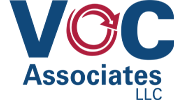The success of any organization largely depends on the strength of its teams. Teams that are well-coordinated, collaborative, and productive can achieve great feats in the workplace. Organizations that invest heavily in creating such teams are reaping the rewards of better performance, increased motivation, and higher job satisfaction for employees.
One of the most powerful tools for building strong teams is Human Resource Development (HRD). This strategy focuses on improving the skills, knowledge, and abilities of employees by providing them with targeted training programs, career development opportunities, and leadership training. We will explore the key components of successful HRD practices, how to measure the success of HRD initiatives, and how to troubleshoot common problems with HRD implementation.
Human Resource Development is critical to building a stronger and more effective workforce. By providing employees with the skills and knowledge they need to succeed, organizations can increase job satisfaction, reduce employee turnover, and improve productivity. HRD helps organizations to build a healthier work culture, enhance their capabilities, and achieve business goals.
Creating Strong Teams Through HRD
HRD (Human Resource Development) plays a pivotal role in building strong teams. By promoting teamwork, communication, and collaboration, HRD can foster an environment where employees are more productive, motivated, and engaged.
With well-designed HRD programs that focus on fostering a collaborative work culture, providing leadership training, and offering opportunities for employees to excel in their careers, organizations can build the best teams to achieve their strategic objectives and drive success. By investing in HRD, companies can cultivate a workforce that is not only skilled and talented but also cohesive and resilient, ready to tackle challenges and seize opportunities in today’s dynamic business landscape.
Key Components of Successful HRD Practices
Successful HRD practices are built on a foundation of five pillars:
- Alignment with Business Strategy: Successful HRD programs must align with the organization’s overall business strategy.
- Tailored Training Programs: HRD should be tailored to meet the needs of employees and the organization.
- Clear Objectives and Expectations: HRD programs should have clear objectives and expectations that align with the organization’s goals.
- Focus on Employee Engagement: HRD should promote employee engagement and motivation by offering career growth opportunities, coaching, and feedback.
- Continuous Improvement: HRD should be evaluated for effectiveness continually and adapted to meet the changing needs of the workforce.
Guidelines for Ensuring Effective HRD Programs
To ensure the effectiveness of HRD programs, organizations should consider these guidelines:
- Invest in high-quality training
- Utilize feedback mechanisms to evaluate HRD effectiveness
- Implementation of HRD programs that are collaborative and comprehensive
- Tie HRD initiatives to the corporate mission and goals
- Engage outside guidance from industry experts or consultants
Measuring the Success of HRD Initiatives
Measuring the success of HRD initiatives can be challenging, but it can be done by implementing the following steps:
- Establish clear objectives and expectations from the HRD initiatives
- Develop metrics to measure the effectiveness of training
- Include feedback from employees and stakeholders
- Evaluate the ROI of HRD programs
Troubleshooting Common HRD Implementation Problems
A well-implemented HRD program can drive significant change in an organization, but there are common challenges that can arise during implementation, such as:
- Resistance to Change: This can be addressed by establishing the importance of HRD programs and communicating how it will benefit employees and the organization.
- Insufficient Resources: By allocating sufficient resources, an organization can ensure adequate training and support for HRD initiatives.
- Poor Communication: Ensuring that everyone in the organization is informed of HRD programs’ progress, impact, and benefits can counter poor communication.
- Inadequate Management Support: Ensuring that HRD programs have the support of management can increase their effectiveness by fostering partnerships and building collaboration at all levels.
Harnessing HRD for a Future-Ready Workforce

HRD is a powerful tool that organizations can leverage to build effective and robust teams. By aligning HRD programs with business strategies and providing tailored training programs, organizations can achieve their strategic goals. Implementing HRD guidelines and metrics is critical to measuring program effectiveness and identifying opportunities for continuous improvement.
Strengthening Your HRD
Finally, addressing common HRD implementation problems is critical to overcoming organizational resistance to change, suboptimal communication and management support, and other obstacles. By consistently investing in HRD efforts, organizations can increase employee satisfaction and retention while achieving organizational objectives.
A Pathway to Success
Ready to transform your medical, dental, or lab operations with state-of-the-art equipment? Trust the experts at VOC Associates, Ohio’s top-rated provider. Our team is ready to assist you in selecting and implementing the best equipment based on your specific needs. Improve your patient services and optimize your operations today. Contact us and experience the VOC Associates difference.









